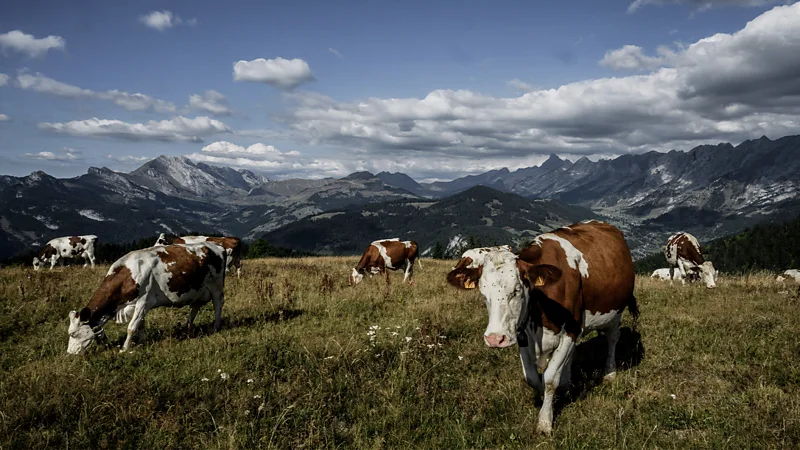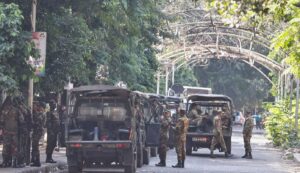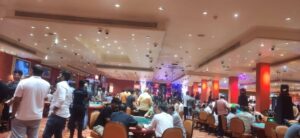
Gazes and ear-twitches: The language specialist learning to talk the expressive dialect of cows
Leonie Cornips was long late for her coffee break. The chilly harvest time discuss made a hot drink feel luring. But Cornips was active. She was a couple of hours into her work with a little group of dairy bovines. If she cleared out presently, she would lose something that would take time to recuperate. Cornips and the crowd had entered a sensitive, shared space she calls “the beat of the bovine”.Gazes and ear-twitches: The language specialist learning to talk the expressive dialect of cows.
Cornips is a sociolinguist at the Meertens Organized in Amsterdam in the Netherlands. The researchers who pass through the institute’s lavish entryway more often than not practice in the consider of Dutch dialect and culture. The soft-spoken analyst earned her scholarly shrubs in the 1990s, and she still thinks about varieties in language structure between diverse lingos in the Netherlands. But in expansion to this, Cornips’ work has more as of late taken what experts in the field call “the creature turn”.Gazes and ear-twitches: The language specialist learning to talk the expressive dialect of cows.
For a long time, Cornips has went through her summer occasions on a cultivate. She was struck from the begin by the distinctive identities of person dairy animals. She examined an exposition by a logician that inquired why language specialists never ponder creatures. It influenced her profoundly. Cornips felt that dairy animals had the insights and social propensities to be great inquire about subjects for a etymologist. As a Dutch individual, she too knew they were social symbols in a country with a energy for cheese. So she turned her proficient aptitudes to cows.Humans have accepted for centuries that the capacity to utilize dialect is a degree of our prevalence. There is indeed an scholarly term for it: “logocentrism”, meaning those who utilize words (from the Greek logos, meaning “word” or “reason”) possess a favored position. Dialect, say numerous etymologists, is what makes us human. Creatures may snort, bark or chirp, but they do not have anything that checks as language.Gazes and ear-twitches: The language specialist learning to talk the expressive dialect of cows.
Cornips is utilizing her work with dairy bovines to thrust back on this thought. It expands half a century of exertion that started with Jane Goodall’s work with chimpanzees and Roger Payne’s recording of humpback whales in the 1960s in an exertion to appear that people may not be as phonetically interesting as we had assumed.
Many of Cornips’ colleagues were distrustful when she proposed they apply the system of phonetics to animals.
“The issue is individuals have no clear thought approximately dialect,” she says. “When they conversation almost dialect, they continuously allude to what comes out of the mouth.” But after investing six a long time altogether drenched in the lives of dairy animals, Cornips considers that dialect is way better caught on as “dispersed” between the mouth, body and environment, making it encapsulated, multi-modal and tangible. “I’m eating with the bovines, touching, kissing, strolling, embracing,” she says.
Most inquire about on bovine dialect tend to center on sounds. A 2015 consider in the Netherlands, for illustration, looked at the pitch of dairy animals sounds to see if they connected with practices and concluded this may be a way to decide their welfare. And a 2019 Australian consider found dairy animals not as it were have unmistakable person vocalizations, but keep up these particular calls over a assortment of contexts.Cornips and the ranchers she initiates to help her record the recurrence, term and escalated of the sounds bovines make. But she moreover focusses on the other ways meaning is communicated among bovines. Her strategies are regularly ethnographic, a way of considering societies that depends unequivocally on perception by the analyst. Cornips carefully watches bovine practices and intuitive nearby sound to decide how they communicate. “I take note with bovines that the body is an instrument to get to know the other,” she says. Perceiving this leads Cornips to conversation less of “dialect” and more broadly of “languaging practices”.
Cows, for case, have an expand welcoming custom that Cornips must take after to effectively slip into the cadence of the group, she says. This got to be self-evident with Piet, a youthful male Fleckvieh from an expectation overseen indoor office who Cornips brought to connect five other dairy animals in an open air field.
“I was continuously so upbeat to see him, that when I got into his glade, I strolled straight towards him and attempted to touch him promptly,” Cornips says. When she did so, Piet would back away.
Cornips steadily came to get it the require to regard Piet’s individual space, as she might with a individual human. She learned to keep her arms by her sides and as it were utilize eye contact irregularly, taking turns with Piet to see at each other and at that point see absent. “It took me very a whereas,” she says. “I was exceptionally doltish. They are educating me how to interface to them.” Cornips figured it out she had to learn an behavior. Without persistence and consideration, she says, you would never see it.Gazes and ear-twitches: The language specialist learning to talk the expressive dialect of cows.
Related,
A unused life for the US’s surrendered railroad stations








1 thought on “Gazes and ear-twitches: The language specialist learning to talk the expressive dialect of cows”